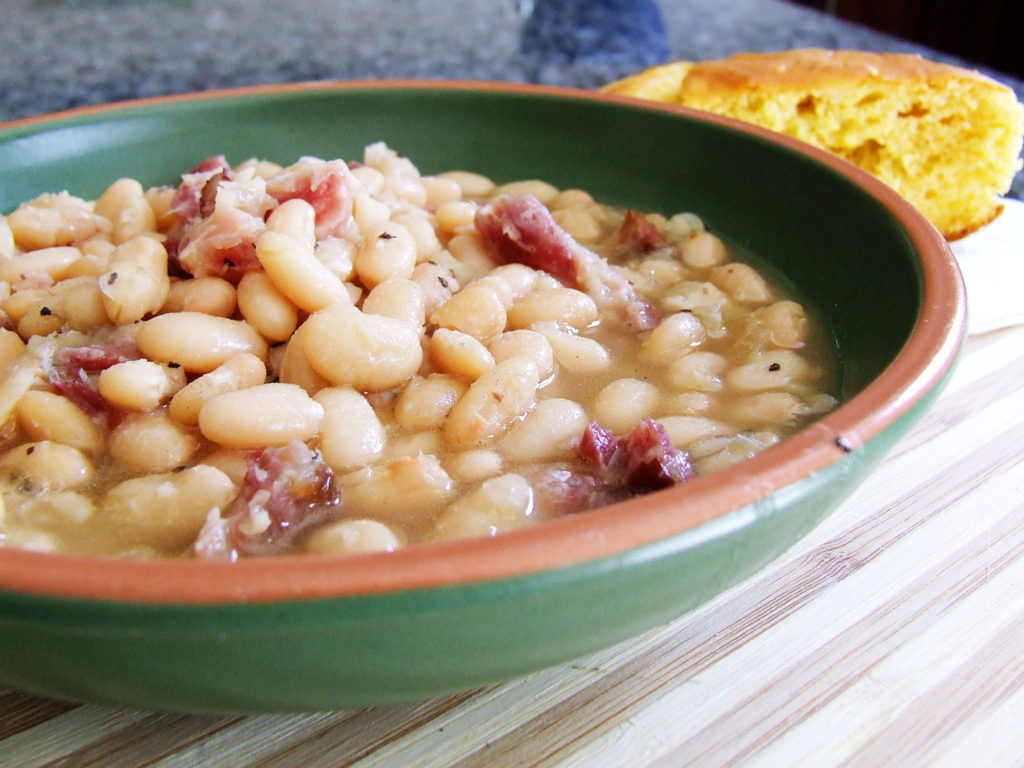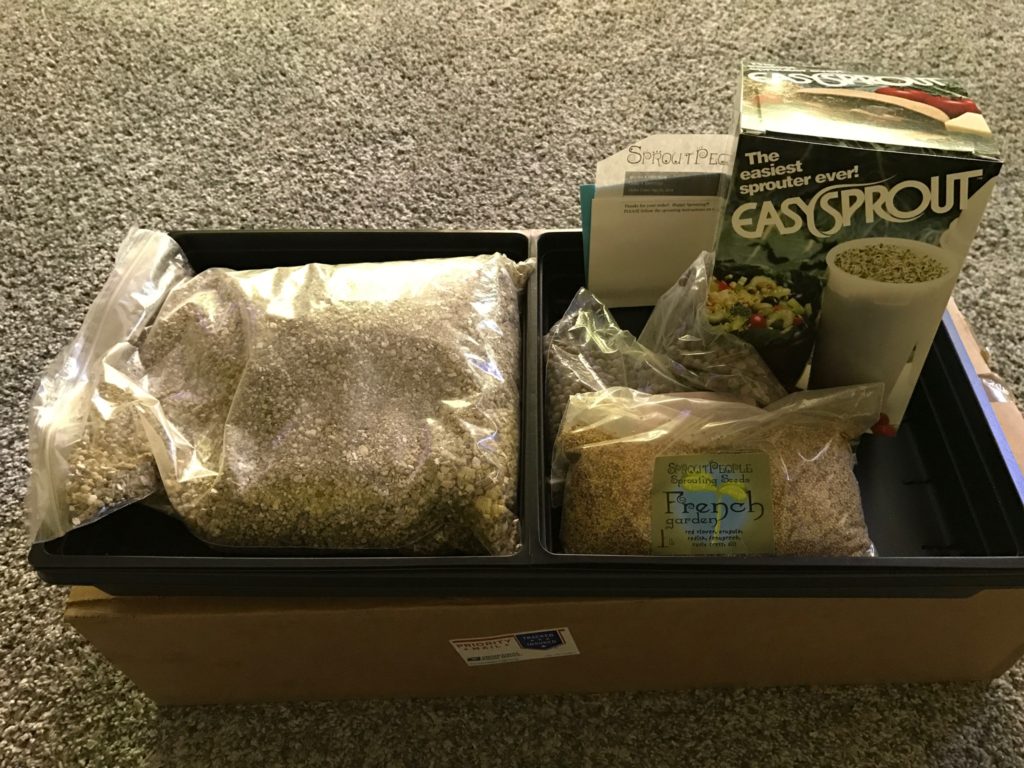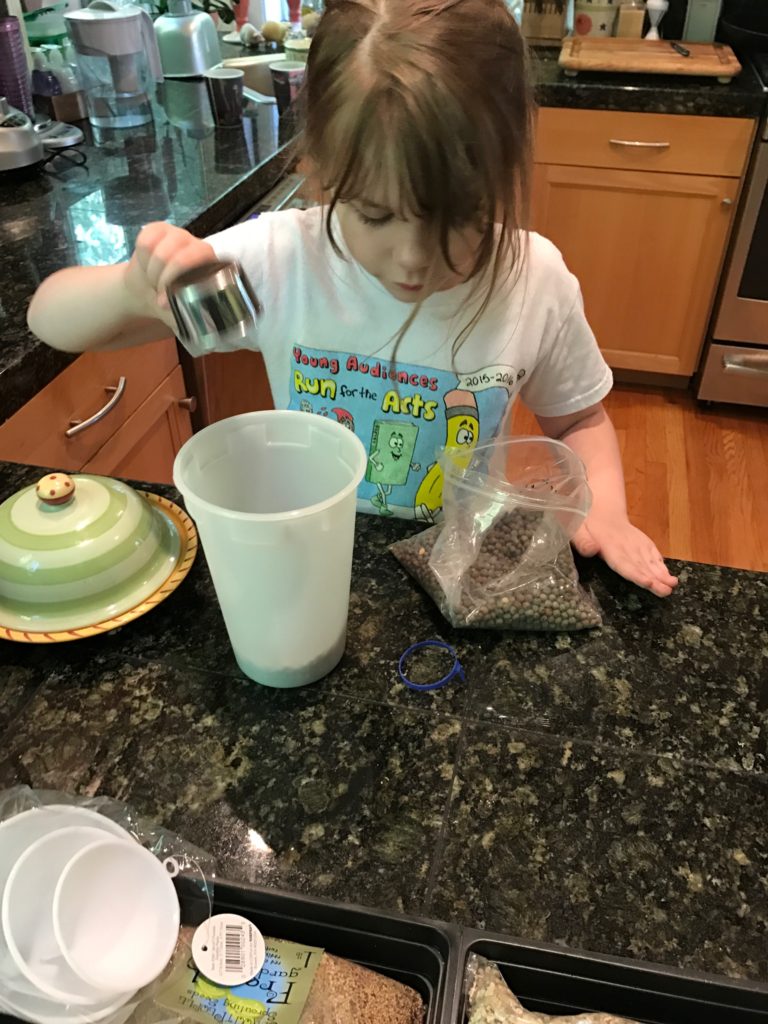For the most part, I prefer to have my diet consist of whole foods and ingredients that I can use to create my own meals. Â That’s what I do on a daily basis. Â I don’t use a lot of packaged and convenience foods like canned soups, hamburger helper and the like. Â I occasionally use frozen meals, especially really challenging stuff like Chinese foods (potstickers!), but even that’s fairly infrequent.
So of course when it comes long term food storage, I don’t want to make the bulk of it from MREs, freeze fried meals and the like. Â It’s not the way we eat. Â But. Â There may be times when being able to rip open a package and est it as is, or only add water, let it sit, and eat are the only real options. Â To that end, I have been looking at some of the companies that frequently market to backpackers and for LTS, like mountain house, wise company, Augason farms, and so on. Â The problem is, I don’t care to buy big buckets of multiple servings unless I can try it first and see if my family can exist on it in a pinch!
Wise Company kindly sent me a sample, and they chose Creamy Pasta and Vegtable Rotini.
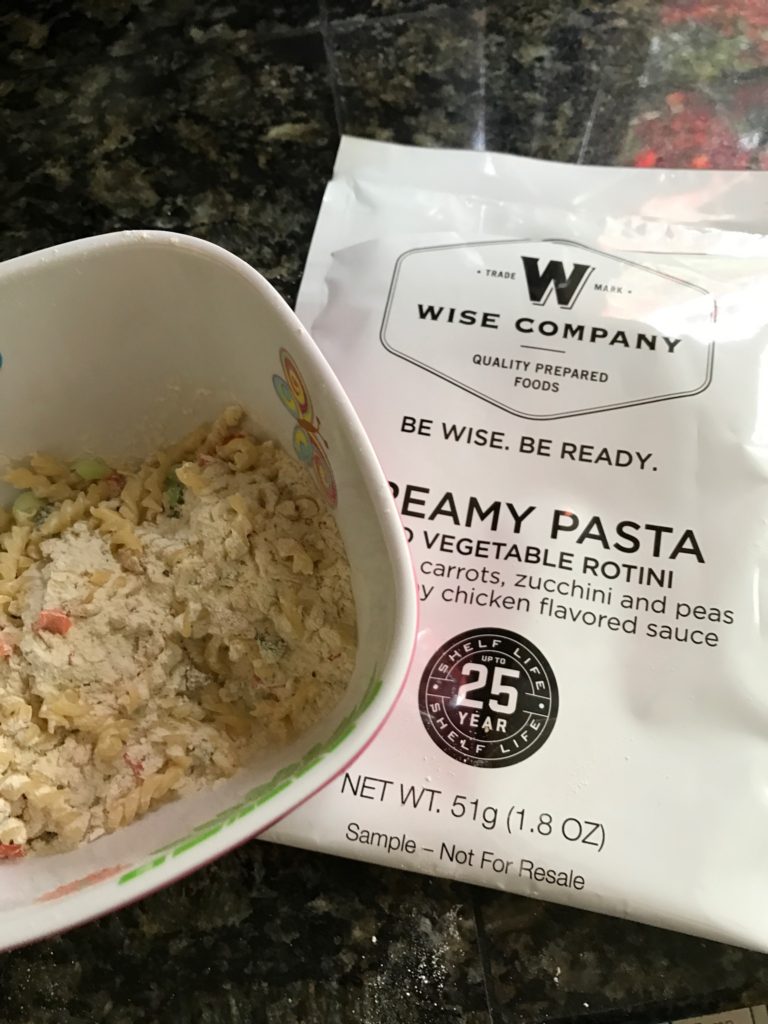
You heat water to boiling, add the contents (I dumped them in a bowl so you could see it), cover and let sit 15-20 minutes, stirring occasionally.
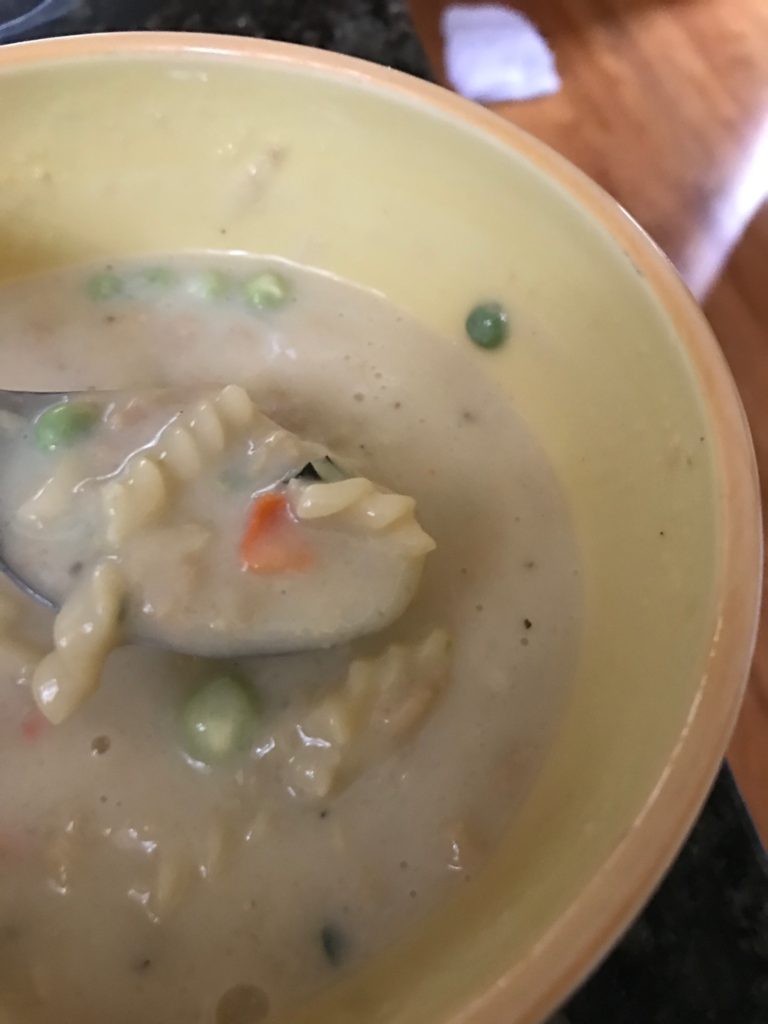
After following those directions, the peas were still crunchy in the middle, the zucchini bits very chewy, and the pasta edibly soft, but more al dente than I would like. Â The first bite or two were ok. Â Not delicious, but ok. Â Probably more than acceptable if you are a more common user of processed foods than I. The sauce reminded me of Lipton Cream of Chicken Cup o Soup. Â That is, something I only ever have eaten when I’m sick, or the power is out and mom needed an instant meal. But edible.
It cooled off very quickly, and that’s when I couldn’t eat it anymore. Â The creamy sauce got quite viscous, almost like it had okra slime in it. Â And frankly, well, it looked like gobs of saliva dropping off the spoon. Â Yuk yuk yuk.
I think that a tomato based sauced product might be a better option. So I need to find the smallest package options from different companies for my taste tests.

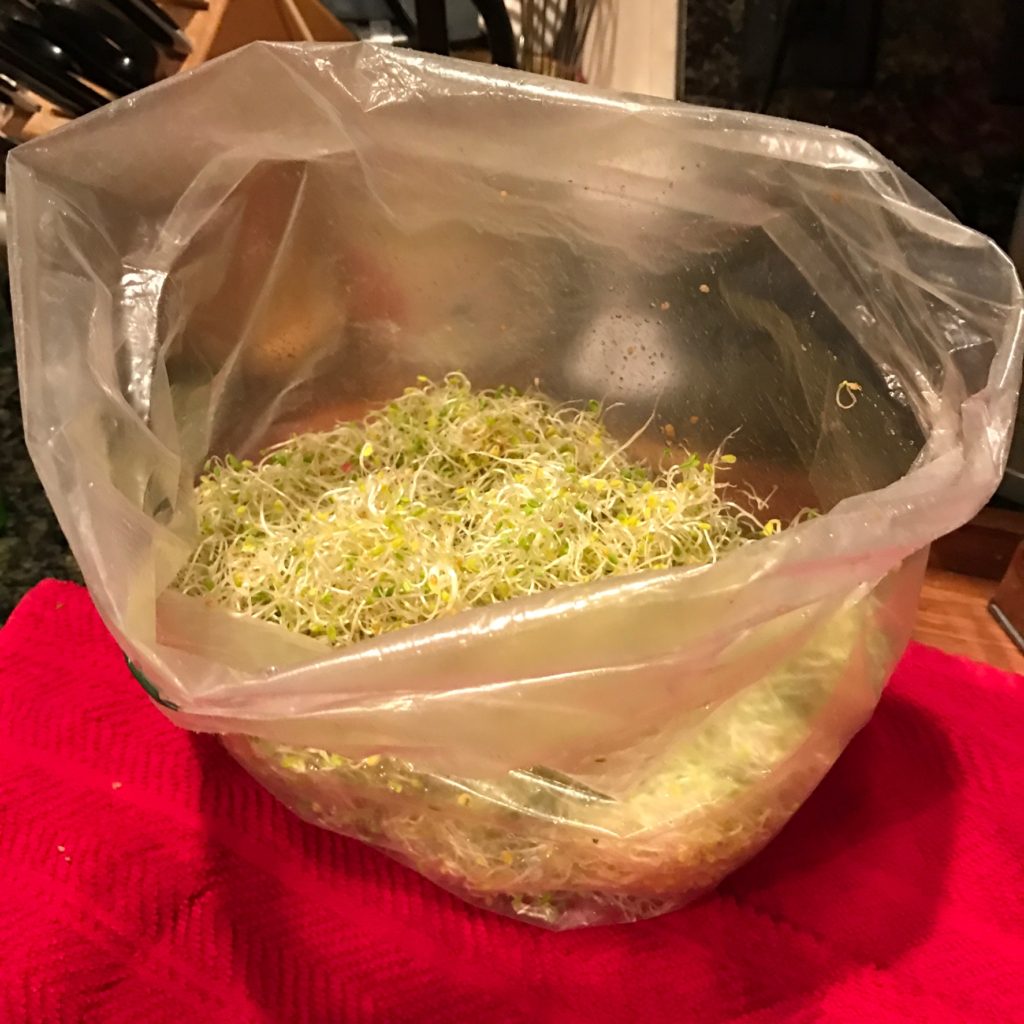
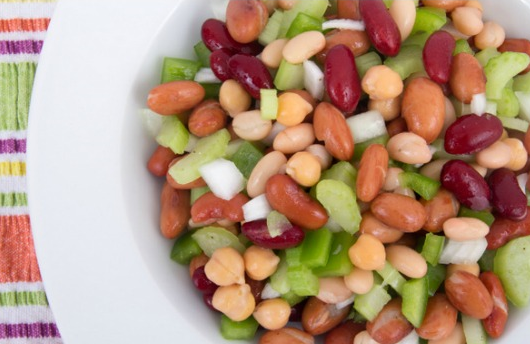 1 can garbanzo beans, drained
1 can garbanzo beans, drained